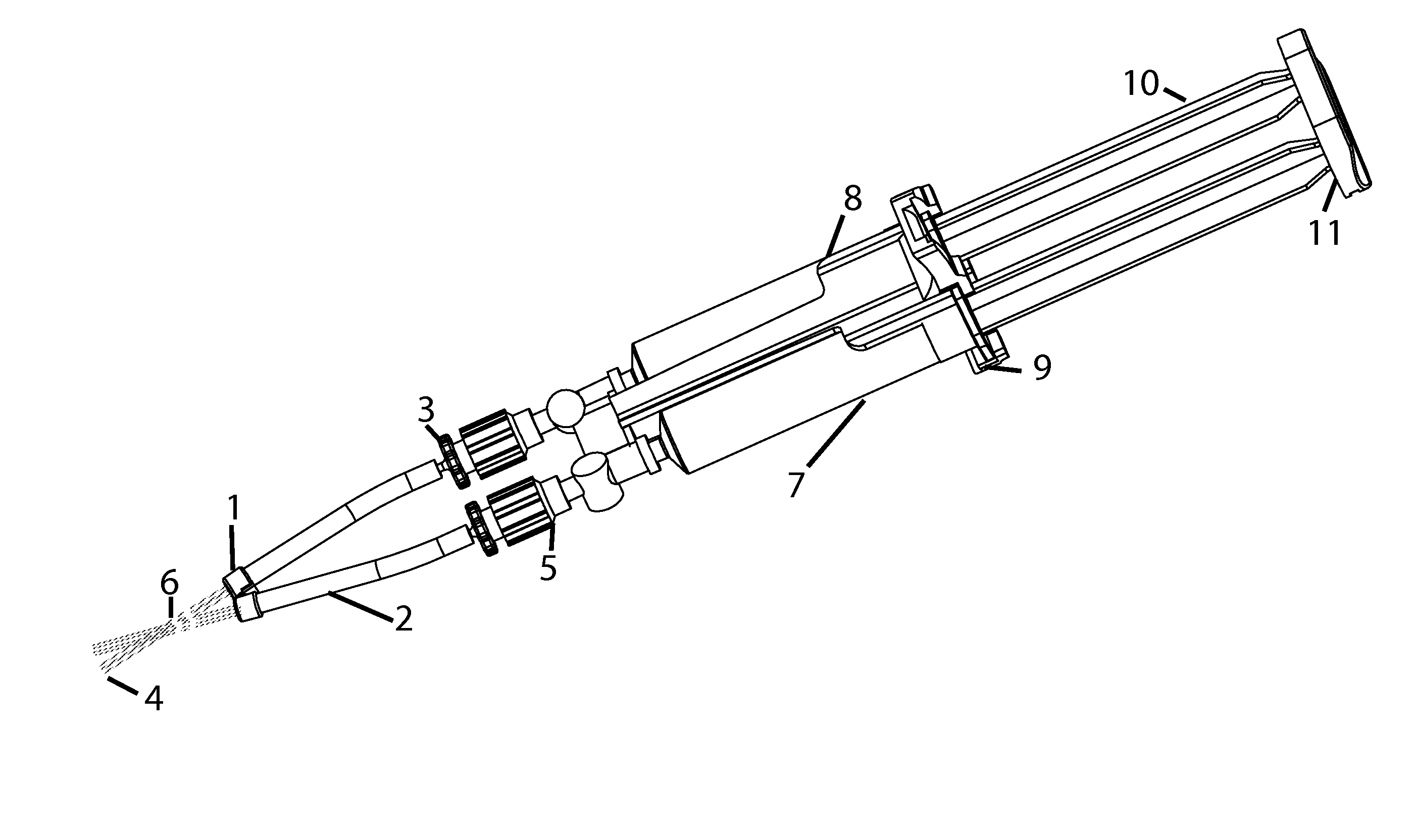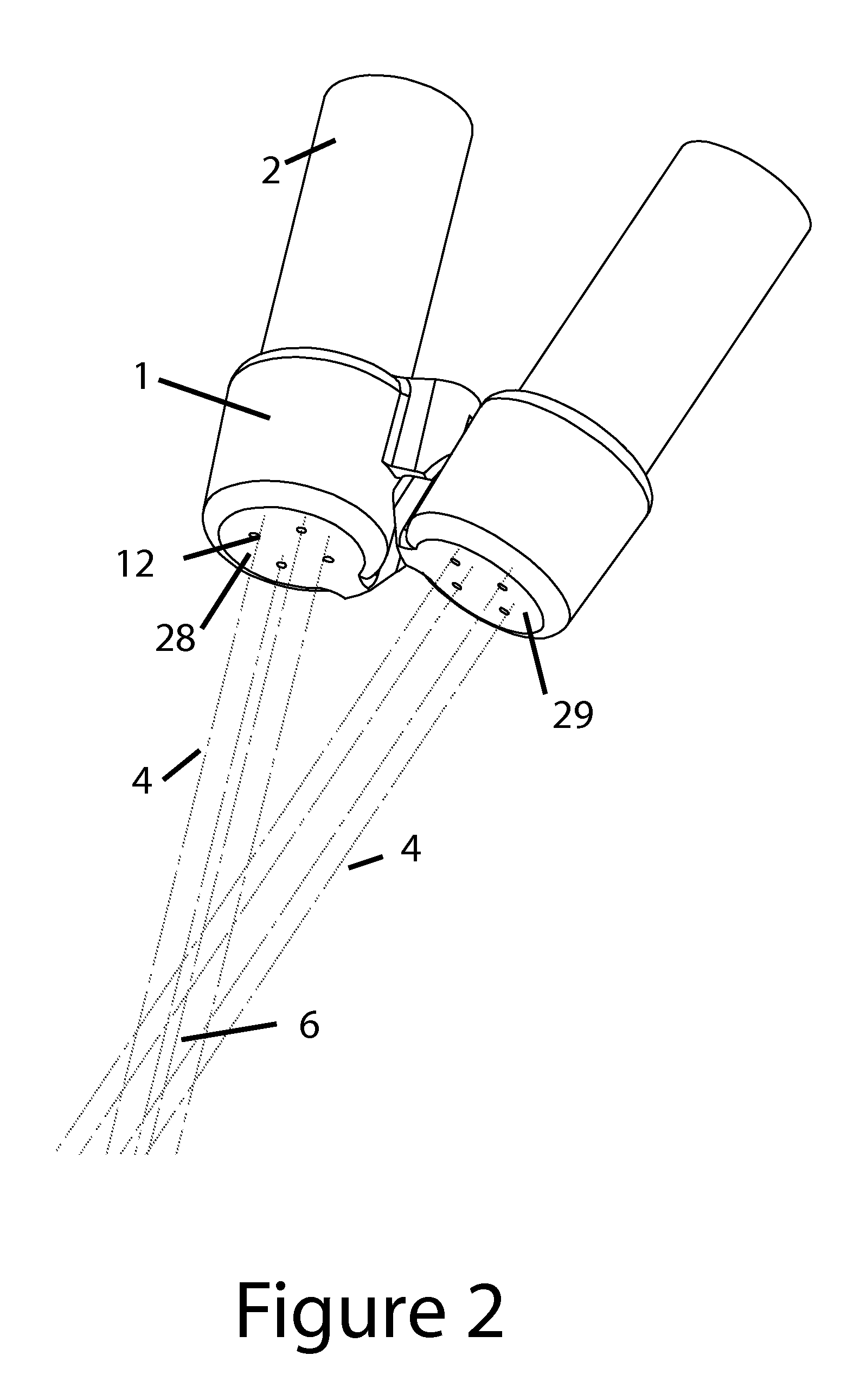Non-Clogging Airless Spray for High Viscosity, High Surface Tension Fluids
- Summary
- Abstract
- Description
- Claims
- Application Information
AI Technical Summary
Benefits of technology
Problems solved by technology
Method used
Image
Examples
second embodiment
[0049]the invention is shown in FIG. 6. In this embodiment, a radius 19 is applied to the exit hole 20. As opposed to FIG. 3 in which a chamfer is included on the inside of the cap, in FIG. 6, the radius is applied to the outside of the cap. The advantage of this design is that it create a dispersive spray in which the fluid streams flow away from each other and thereby create a wider spray pattern. A second advantage to the design is that this hole configuration creates an artificially smaller hole diameter and thereby creates a much higher exit velocity. As shown in FIG. 6, the biological fluid in each cap form streamlines of fluid flow. In FIG. 6, the streamlines are illustrated as items 22. The streamlines 22 are forced into one of the exit holes which are located to the outer edge of the inner surface of the tubing 2. Locating the holes as far away from the centerline of the tubing, will increase the distance between holes and thereby prevent the exiting fluid streams from comb...
fourth embodiment
[0051]the design is illustrated in FIG. 7 and FIG. 8. In this case the exit holes 32 are drilled in a thin plastic film 33 which is bonded to the two connecting pieces 2. The plastic caps 1 described in FIGS. 1-6 are replaced by a single thin film 33. The plastic film 33 is angled via thermoforming or injection molding to form a controlled angle theta which ranges between 160 degrees and 180 degrees. This angle theta creates an included angle between face 30 and face 31. This embodiments allows very small holes (32 creates an improved shower pattern and promotes better mixing of the two fluids. However laser drilling of the exit holes requires relatively thin substrates 33. The ideal thickness of a substrate should be less than 0.015 inch and ideally the thickness of the substrate 33 is between 0.005 and 0.010 inch. This thin section becomes very difficult to injection mold but may be extruded or cast into a thin film. The substrate 33 can be adhesively bonded to the tubing 2 prior ...
PUM
 Login to View More
Login to View More Abstract
Description
Claims
Application Information
 Login to View More
Login to View More - R&D
- Intellectual Property
- Life Sciences
- Materials
- Tech Scout
- Unparalleled Data Quality
- Higher Quality Content
- 60% Fewer Hallucinations
Browse by: Latest US Patents, China's latest patents, Technical Efficacy Thesaurus, Application Domain, Technology Topic, Popular Technical Reports.
© 2025 PatSnap. All rights reserved.Legal|Privacy policy|Modern Slavery Act Transparency Statement|Sitemap|About US| Contact US: help@patsnap.com



